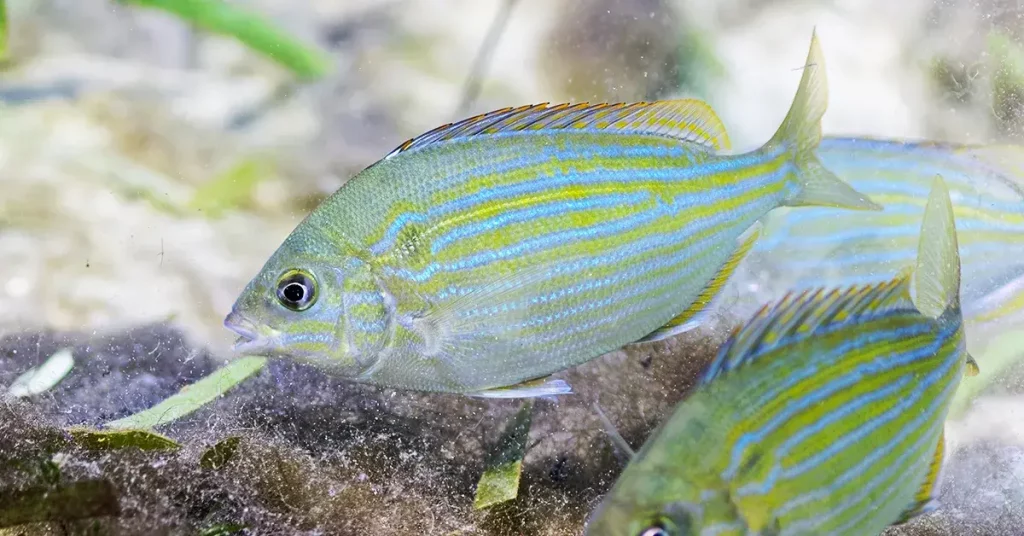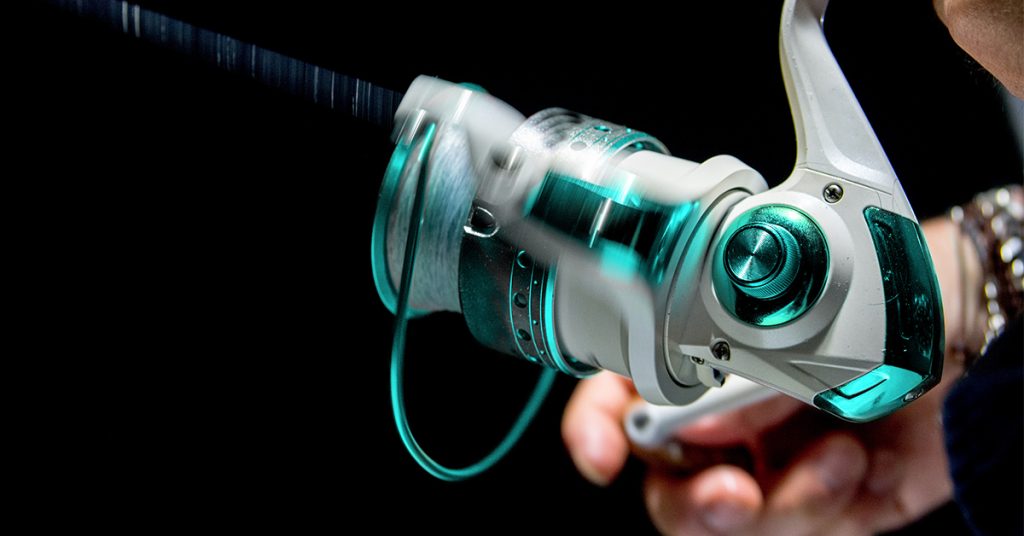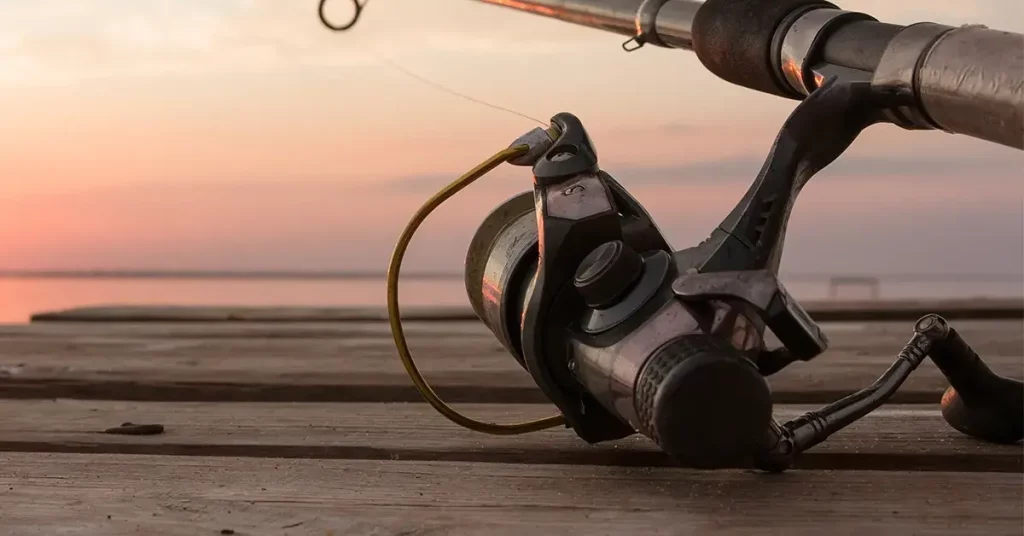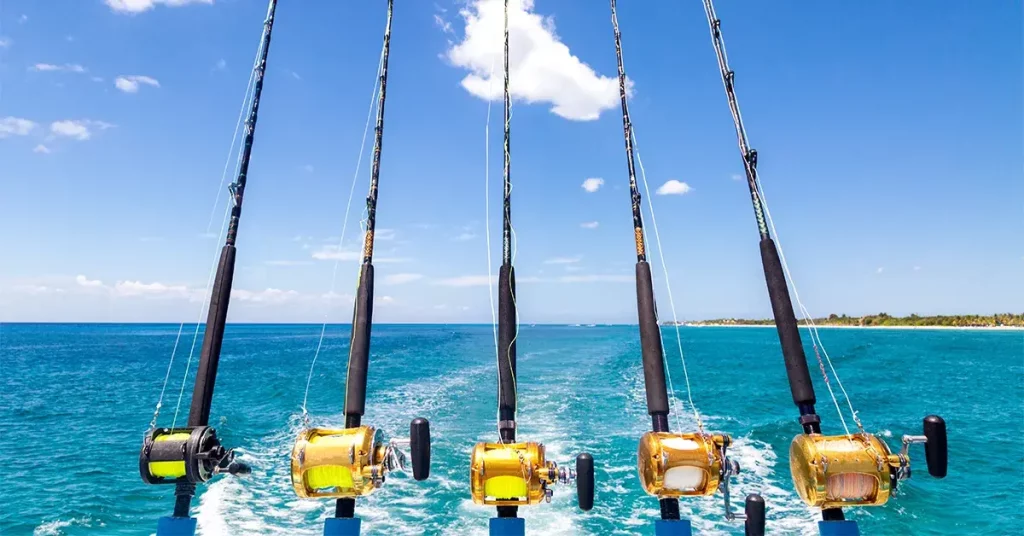Pinfish are one of the most common bait fish used for a variety of inshore and offshore saltwater species. They can be used to catch redfish, snook, grouper, snapper and even work for larger offshore species like Tuna and Dolphinfish.
They’re plentiful all along the east coast, and can be caught fairly easily with traps, using a rod and reel, or with a cast net. One reason for their popularity is that they’re nearly everywhere – under piers, on grass flats and around reefs.
Pinfish have a variety of uses, from cut bait to chum to live bait. They’re robust enough to survive in simple livewells for days at a time without needing to feed them anything. This also makes them excellent live bait, as they’ll survive on a hook for longer than most other bait.
Let’s take a look at this humble bait fish in more detail – including how to find, catch, store, and rig for bait.
Pinfish Facts
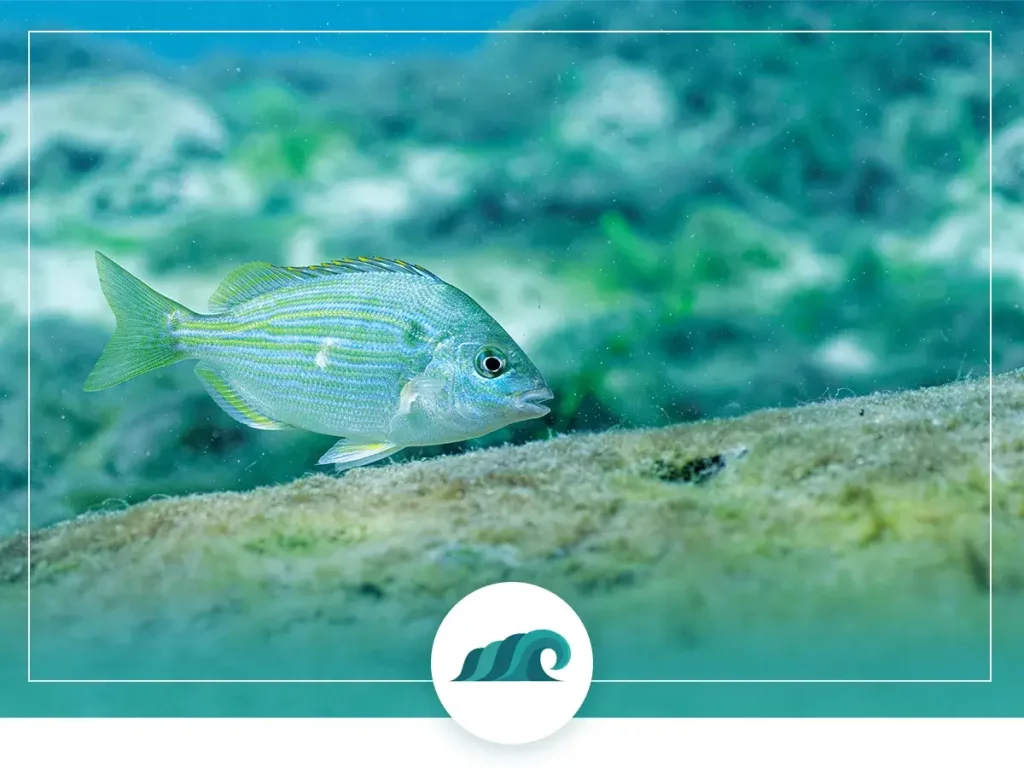
Pinfish (Lagodon rhomboides) are a saltwater fish in the same family as breams and porgies. They mostly inhabit shallow coastal subtropical waters along Atlantic coast of the US and Mexico.
They’re fairly small, with most being between 3 and 5 inches. Rarely they can grow up to 8 inches in deeper water. This makes them the perfect sized bait for a variety of saltwater species.
They have silvery colored sides, with 5 or 6 dark vertical bars running the length of their sides. Their upper backs feature olive, yellow and blueish pigmentation. The name pinfish comes from their prominent spiny dorsal fin capable of puncturing human skin.
Pinfish actually change their diet over the course of their lives, shifting from purely carnivorous to mostly herbivorous as they mature. Juvenile pinfish eat a diet of shrimp, fish eggs, larvae, and other small crustaceans. Once they reach about 4 inches in length, their gut tracts shift and they switch to eating more that 90% plant matter.
Where to Find Pinfish?
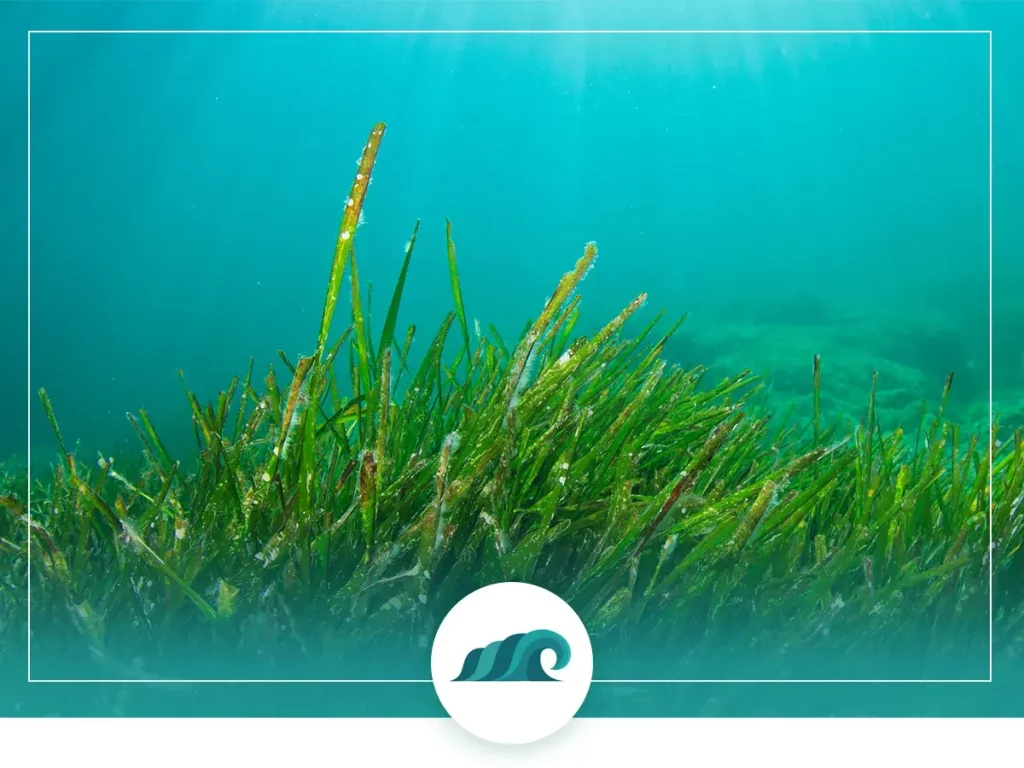
As their one of the most plentiful bait fish in many areas, finding pinfish is fairly straightforward. They can be caught all along the east coast, from Massachusetts down to the Florida Keys, and throughout the Gulf of Mexico.
One of the best places to locate Pinfish is along sea grass flats. They tend to congregate in large numbers near glass flats, as these areas provide plenty of cover as well as small fish and crustaceans for them to eat. Interestingly, as pinfish mature they develop the ability to digest vegetation and sea grass, so some of them will graze on the seagrass they’re hiding in.
They can also be found near other underwater structure like channel markers, jetties, mangrove roots, piers, and other areas with plenty of cover.
How to Catch Pinfish?
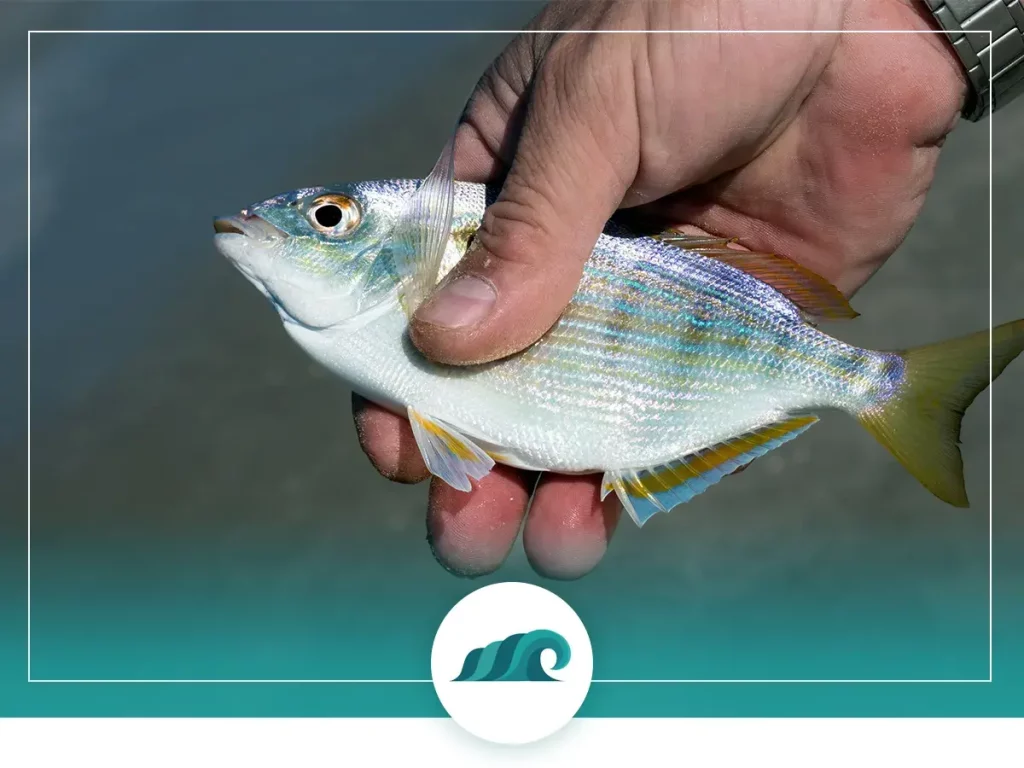
There are a variety of different ways to catch pinfish, from Traps to cast nets to rod and reel fishing. Let’s take a look at each one in detail.
Cast Net
Cast nets can be a highly effective way of catching pinfish, especially in shallower water. As they tend to swim down below the surface when they’re spooked, netting them in deeper water can be challenging.
To net pinfish, you’ll need to locate some (preferably in shallower water less than 5 feet deep). You’ll want to use a net with about ¼ inch mesh netting. Chumming the water will help get them schooling in a tight area, and then you can make your throw.
Like other bait fish, cast netting pinfish can cause some minor damage to them. If you’re looking for absolutely pristine pinfish to use as live bait, you’ll want to go with another method.
Trap
If you want a more passive way of scoring pinfish, using a specialized pinfish trap can be highly effective. These traps are designed specifically for trapping pinfish, so they’ll be able to swim in, but not back out.
All you’ll need to do is find one or more promising locations, add bait, and then drop a few traps in the water. Then check back on your traps in 6 to 12 hours to see if you’ve caught anything.
Some anglers swear by dropping traps on sandy bottoms, but in reality, pinfish traps will work anywhere pinfish are present in the water. To find what area will work best, you can drop traps in several different locations, and see which area and features perform best.
Pinfish traps can be baited with a variety of different baits, including fish carcasses, squid, shrimp and even cat food.
If you’re looking for a simple and effective Pinfish trap, check out the Joy Fish Pinfish Trap.
Sabiki Rig
Sabiki rigs are rigs with a series of hooks specifically designed to catch baitfish. They can be highly effective, and can land you multiple baitfish on a single line.
While they differ somewhat, the basic Sabiki rig design features 6 to 10 small hooks attached with smaller dropper lines to a main line with a weight tied to the end. The easiest way to work a Sabiki rig is to let it drop to the bottom and then jig it up slowly and steadily. If you feel a bite, keep working the rig, as you can often get multiple fish hooked on the same rig.
Check out the Hayabusa S-650E-8 Hage Aurora Sabiki for a cheap and effective pinfish Sabiki rig.
Rod and Reel
Pinfish can also be caught with a simple rod/reel and baited hook. Simply throw your chumbag in the water near a grass flat, or other area that might contain pinfish. If there are pinfish in the area they’ll come after your chum quickly.
Use a small hook with a small split shot weight attached. A variety of different baits can be used, but squid and shrimp are known to work particularly well. To avoid stabbing your hands on their spiny fins, a good fish hook remover is a good idea.
Once you get used to it, catching pinfish using this method will result in healthy, vital fish that will work well as live bait. You’ll also be able to catch a surprising amount of fish, even without the help of a Sabiki rig.
How to Store Pinfish?
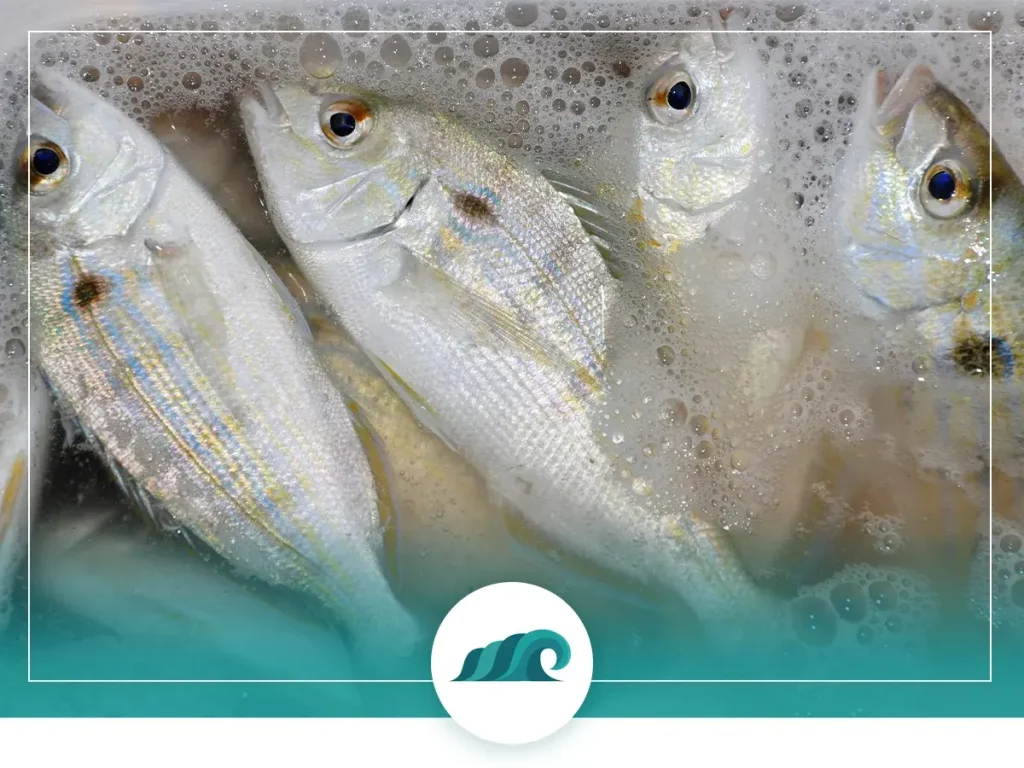
Once you’ve caught a fair number of pinfish, you’ll need to store them properly so they can be used as live bait. Luckily, they’re one of the most resilient bait fish out there, so they’ll survive for days or even weeks if properly taken care of. Unlike finicky baitfish like herring and ballyhoo, theres no need to baby these fish to keep them alive.
If you’ve got a live well or bait tank on board, then you can stash a good number of pinfish within it to use as needed. Make sure to feed them regularly with squid, shrimp, or pellets.
How to Rig a Pinfish?
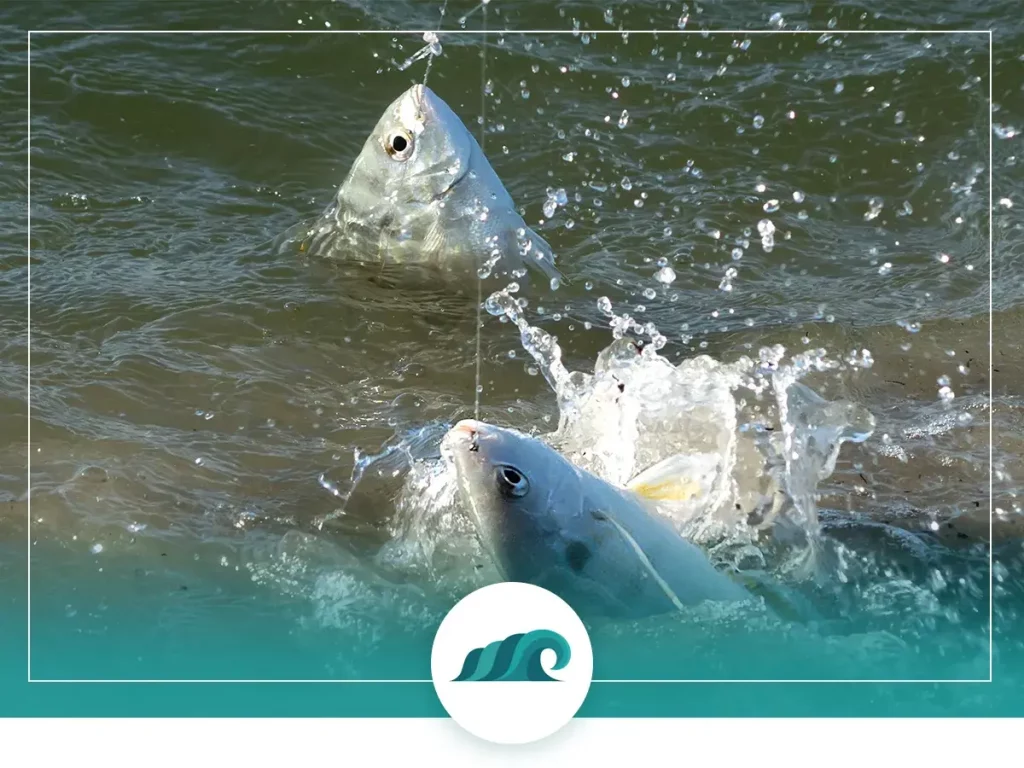
There a number of different ways you can rig a pinfish for use as live bait. Let’s take a look at a few of the best methods in more detail.
Through the Mouth
Hooking the pinfish through the mouth and lips will allow it to swim freely, while keeping it in fairly good shape – so you can keep casting it over and over. This method works well for inshore fishing where you want to make repeated casts. Make sure to get your hook through both lips, as this will secure the fish in place better than hooking a single lip.
Through the Tail
Hooking a pinfish through the tail allows it to swim towards the bottom, making it a good option for bottom fishing or suspending under a float. When suspended under a float it will struggle to swim towards the bottom, presenting a tempting target to larger saltwater predators. Keep in mind that pinfish hooked with this method will tire it out quicker, so it won’t last as long as other methods.
Through the Top of the Head
This method will hook the pinfish in the soft spot tight above its skull bone. This will cause it to dive further down the water column, so it you can target species that like to hang near the bottom like grouper and snook. It will also work well in current, as the tail remains unencumbered and the fish remains able to swim freely.

